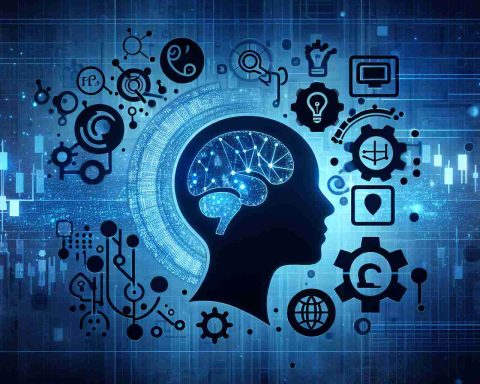High schools in Shizuoka Prefecture are embracing the use of AI in both lessons and administrative tasks, heralding a new era of innovation. Despite concerns about reliability and data privacy risks, some schools are cautiously exploring AI integration.
In early July, at Shizuoka Chuo High School in Aoi-ku, students in the “Software Applications” class engaged in content creation using AI. Students were mindful of information ethics, refraining from inputting personal information, avoiding copyright infringement, and ensuring content was respectful. One male student interacted with the conversational AI “Chat GPT,” creating multiple prompts to compare outcomes. Meanwhile, a female student used AI to translate Japanese prompts into English, generating an image of a foreign male when the English prompts were inputted.
With themes ranging from climate change to biodiversity extinction, students crafted content utilizing AI, aiming to enter contests after confirming copyright compliance. Educator Suzuki emphasized that exposing students to AI is essential in preparation for a tech-driven workforce.
Shizuoka prefectural high schools reported about 30 instances of AI utilization for administrative tasks, though some teachers expressed concerns about unclear output rationale. While guidelines for AI integration were established last summer, ongoing discussions at the national and prefectural levels seek to adapt to the rapid expansion of various AI functions. Educational workshops and research groups are exploring AI’s potential in enhancing teaching methodologies, reflecting the collaborative effort among educators to leverage AI effectively.
Exploring the Future of AI Integration in Shizuoka Prefecture’s High School Education
As high schools in Shizuoka Prefecture continue to integrate AI into their educational practices, new dimensions of innovation and possibilities are being uncovered. Beyond the initial initiatives highlighted in the previous article, there are further developments shaping the landscape of AI integration in high school education across the region.
Key Questions:
1. What are the potential benefits of AI integration in high school education beyond classroom activities?
2. How are privacy concerns being addressed in the utilization of AI technologies in academic settings?
3. What challenges exist in effectively implementing AI integration in high school education within Shizuoka Prefecture?
In response to these questions, it’s essential to delve into the evolving dynamics surrounding AI integration in high school education.
Additional Insights:
One notable aspect that has gained traction is the use of AI-driven personalized learning platforms to cater to diverse student needs. Through adaptive learning algorithms, students can receive customized educational materials and feedback tailored to their individual learning pace and style. This approach not only enhances student engagement but also promotes self-directed learning.
Addressing privacy concerns, schools are implementing stringent data protection protocols and guidelines to safeguard student information. With increasing data breaches and cybersecurity threats, ensuring the confidentiality and integrity of student data remains a critical priority in the AI integration process.
Challenges and Controversies:
Despite the potential advantages of AI integration, challenges persist in navigating ethical considerations and ensuring transparency in AI decision-making processes. Questions arise regarding accountability and bias in AI algorithms, especially in assessments and grading systems. Striking a balance between technological innovation and ethical responsibility poses a significant challenge for educators and policymakers alike.
Advantages and Disadvantages:
Advantages:
– Enhanced student learning experiences through personalized education delivery.
– Improved administrative efficiency and resource management.
– Preparation of students for future employment in technology-driven industries.
Disadvantages:
– Potential risks of data breaches and privacy infringements.
– Ethical dilemmas related to AI decision-making and algorithm biases.
– Unequal access to AI technologies leading to disparities in educational outcomes.
In navigating these complexities, ongoing dialogue and collaboration among educators, policymakers, and technology experts are crucial in maximizing the benefits of AI integration while mitigating its associated risks.
For more information on AI integration in education, visit education.gov.

















